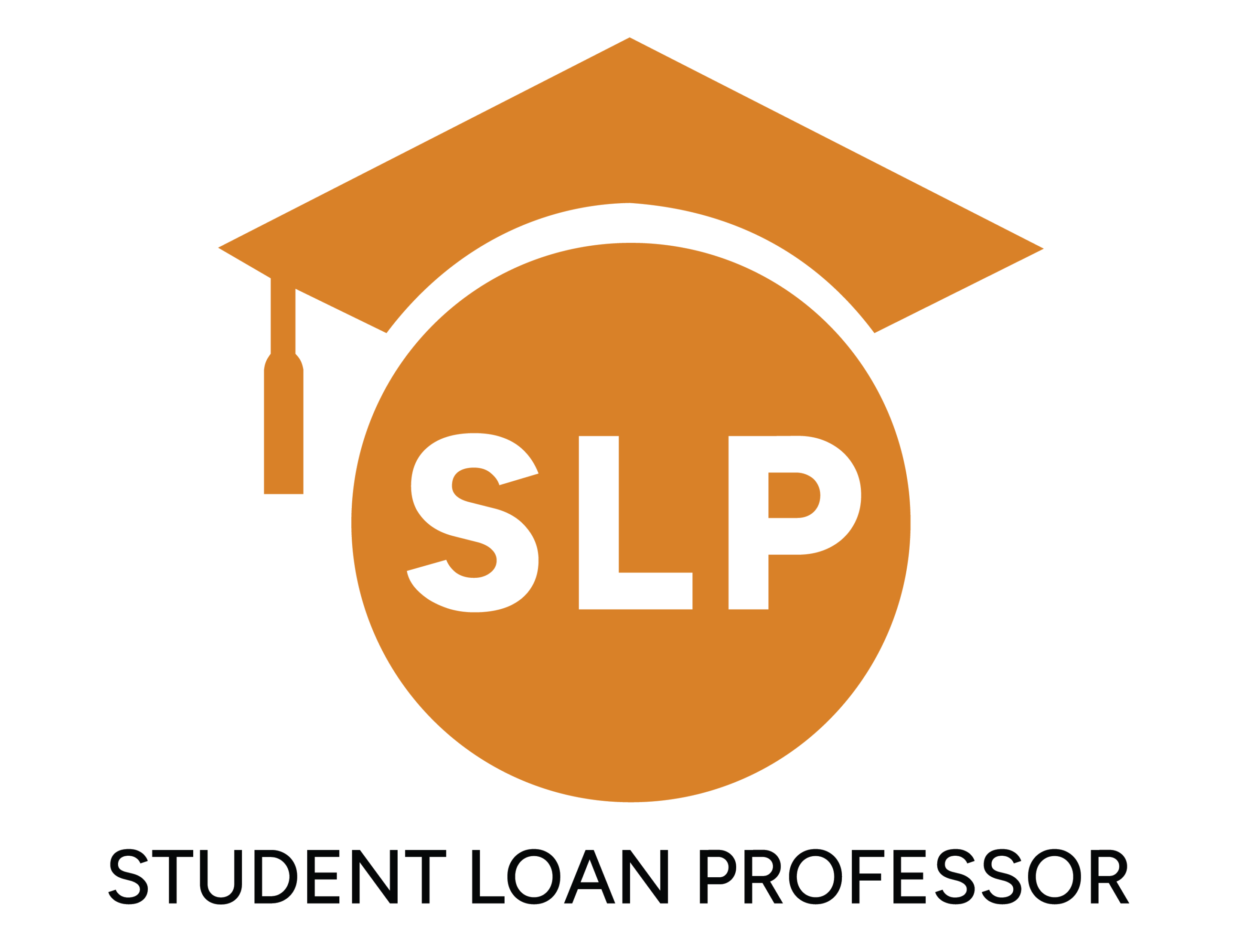Key Takeaways
- Federal student loan repayment options include income-driven repayment (IDR) plans, public service loan forgiveness (PSLF), and loan consolidation.
- Interest rates for 2024-2025 have increased, making refinancing an appealing option for some borrowers.
- Private refinancing lenders offer exclusive discounts and cashback for Student Loan Professor clients.
- Staying informed about policy changes is crucial, as new regulations can impact repayment plans and eligibility.
- Borrowers should compare repayment strategies to find the most cost-effective approach that aligns with their financial goals.
Managing student loan repayment is a crucial financial responsibility for many borrowers. With interest rates fluctuating and policy changes affecting repayment options, it is crucial to stay informed and explore strategies that work best for your financial situation.
This guide provides insights into federal repayment plans, loan forgiveness programs, refinancing opportunities, and expert advice to help you make informed decisions about your student debt in 2025.
Whether you’re just starting repayment or looking for ways to lower costs, this guide will provide the insights you need to manage your student loans successfully.
Federal Student Loan Repayment Options
The U.S. Department of Education provides several repayment plans to accommodate different financial situations.
Selecting the right repayment plan can help borrowers lower their monthly payments, minimize total interest costs, or qualify for loan forgiveness. Many borrowers are unaware of the student loan repayment plan options available and may default to the standard repayment plan, which may not always be the best fit.
Here’s a breakdown of different plans to consider.
Standard Repayment Plan
The standard repayment plan allows federal student loan borrowers to make fixed monthly payments over ten years. While this option results in higher monthly payments compared to other plans, it enables borrowers to pay off their loans faster and with less interest over time.
This plan suits individuals who can handle the payments and aim to eliminate their student debt swiftly.
Pros
- Faster debt repayment (10 years).
- Lower overall interest paid compared to extended plans.
- Predictable fixed monthly payments.
Cons
- Higher monthly payments may not be affordable for all borrowers.
- There is no eligibility for loan forgiveness unless combined with Public Service Loan Forgiveness (PSLF).
Borrowers who can comfortably manage higher payments should consider this plan because it reduces the overall interest paid.
Unlike income-driven repayment plans, which may extend the repayment term and increase the total cost, the standard plan provides a straightforward path to becoming debt-free within a decade.
Graduated Repayment Plan
The graduated repayment plan might be suitable for borrowers who expect their income to increase over time. Payments start lower and increase every two years, making it easier to manage the loan in the early stages of one’s career.
Like the standard repayment plan, the loan is paid off in ten years, but the graduated approach accommodates those with lower initial earnings.
Pros
- It starts with lower monthly payments, easing financial strain for new graduates.
- Payments increase as career and income progress.
- The loan is fully paid off in 10 years.
Cons
- Higher total interest paid compared to the standard plan.
- Monthly payments increase regardless of income changes.
This plan is beneficial for recent graduates who anticipate salary increases as they gain experience in their respective fields.
However, borrowers should be cautious, as payments will increase regardless of whether their income rises as expected.
Extended Repayment Plan
The extended repayment plan allows borrowers to stretch out loan payments over a period of up to twenty-five years. This plan reduces monthly payments but results in higher overall interest costs.
It is often beneficial for individuals with a large loan balance who need lower payments to manage their finances effectively.
Pros
- Lower monthly payments.
- It is more manageable for borrowers with large balances.
Cons
- Significantly higher total interest paid.
- Longer repayment term prolongs debt burden.
Borrowers who choose this plan must weigh the trade-off between lower monthly payments and a longer repayment term, which leads to more significant interest accumulation over time.
If affordability is a concern, this plan may provide necessary relief, but those who can afford higher payments should consider alternatives to avoid excessive interest costs.
Income-Driven Repayment (IDR) Plans
Income-driven repayment (IDR) plans cap monthly payments based on a borrower’s income and family size, ensuring affordability. After 20-25 years, any remaining balance is forgiven.
Pros
- Lower monthly payments based on income.
- Potential for loan forgiveness after 20-25 years.
- Adjusts to financial circumstances.
Cons
- A longer repayment period results in higher total interest costs.
- Forgiven amounts may be taxable.
The Pay As You Earn (PAYE) Plan limits payments to 10% of discretionary income.
The Income-Based Repayment (IBR) Plan is similar but has variations depending on when the loan was taken out, capping payments at 10-15% of discretionary income.
The Income-Contingent Repayment (ICR) Plan determines payments based on 20% of discretionary income and provides forgiveness after 25 years.
Borrowers exploring IDR plans should be aware of potential tax implications on forgiven balances. While IDR plans make monthly payments more manageable, the long-term interest accumulation and potential tax burdens should be factored into decision-making.
Using Other Forgiveness Programs to Lower Repayment Costs
Many borrowers assume Public Service Loan Forgiveness (PSLF) is the only way to get their student loans forgiven.
However, several other forgiveness programs can significantly reduce repayment costs based on profession, service, or financial hardship.
- Teacher Loan Forgiveness: This program offers up to $17,500 in forgiveness for teachers who have worked in low-income schools for five consecutive years.
- Healthcare Provider Forgiveness Programs: Medical professionals, nurses, and mental health providers can qualify for federal or state-sponsored programs.
- Military Student Loan Repayment Programs: Active-duty military members, veterans, and service members may qualify for full or partial student loan forgiveness.
- State-Based Loan Forgiveness Programs: Some states provide relief to professionals working in high-need areas, such as doctors, lawyers, and social workers.
Each program has specific eligibility criteria, including employment type, payment history, and loan type.
Borrowers should check the Federal Student Aid website or consult a financial expert to determine whether they qualify and to ensure they follow the correct application process.
Additional Strategies to Lower Student Loan Costs
Beyond choosing the right repayment plan, borrowers should explore strategies to reduce costs further. Consider a few approaches, such as:
- Making extra payments to reduce the principal faster and save on interest.
- Enrolling in employer repayment assistance programs offered by some companies.
- Consolidating loans to simplify repayment and potentially access better terms.
- Seeking tax deductions on student loan interest, which can lower taxable income.
By combining these strategies with the right repayment plan, borrowers can significantly lower their overall student loan burden.
Refinancing can be another effective way to secure lower interest rates, reduce monthly payments, and potentially save thousands over the life of the loan.
Borrowers refinancing with partner lenders through Student Loan Professor can access exclusive benefits, such as a 0.25% interest rate discount with SoFi and cash bonuses up to $550 with ELFI and Splash Financial.
Avoiding Common Student Loan Repayment Mistakes
Many borrowers make avoidable mistakes that increase their repayment timeline and total interest paid. Understanding these pitfalls and implementing the right strategies can significantly improve student loan repayment efficiency.
Choosing the Wrong Repayment Plan
Sometimes, borrowers automatically enroll in the standard repayment plan, which ensures full loan repayment within ten years but doesn’t offer flexibility for those with financial constraints.
While this plan works for some, others may benefit from income-driven repayment (IDR) plans, which adjust payments based on income and family size, or extended plans that lower monthly payments by stretching repayment over a longer term.
Loan consolidation can also help simplify payments, especially for those managing multiple federal student loans. However, borrowers considering consolidation should be aware that extending repayment terms could result in higher total interest costs.
Before selecting a plan, using a loan simulator tool on the Federal Student Aid website can help compare repayment options based on projected income and financial goals.
Missing Payments and the Risk of Default
Even a single missed loan payment can result in late fees and a damaged credit score. If payments are missed for too long, loans can enter delinquency, and after 270 days, they are considered in default.
Defaulting on a student loan has serious consequences, including wage garnishment and loss of eligibility for federal repayment plans or forgiveness programs.
Setting up automatic payments can help avoid missed payments. Many loan servicers offer a 0.25% interest rate reduction for borrowers who enroll in autopay.
Borrowers who anticipate difficulty making payments should contact their loan servicer immediately to explore options such as deferment, forbearance, or switching to an income-driven repayment plan.
Keeping track of monthly payments and ensuring they are processed correctly is also crucial in preventing delinquency.
Overlooking Loan Consolidation as a Repayment Strategy
Managing multiple federal student loans with different interest rates and due dates can be challenging. Loan consolidation allows borrowers to combine multiple loans into a single monthly payment, simplifying repayment and potentially qualifying them for better terms.
For those struggling with high payments, consolidating loans into a direct consolidation loan may provide access to income-driven repayment plans that were previously unavailable for certain loan types.
Consolidation can also be a helpful strategy for borrowers with defaulted loans, as it allows them to regain good standing.
However, extending the repayment period through consolidation could increase the total amount paid in interest over time, so the benefits must be carefully considered.
Ignoring Employer Student Loan Repayment Benefits
Some companies offer student loan repayment assistance programs, but many employees fail to take advantage of them. These benefits can significantly reduce loan balances, as some employers contribute a fixed monthly amount toward student debt.
Be sure to check with the HR department to find out if student loan repayment assistance is offered. Some companies provide direct payments toward loans, while others offer matching contributions similar to a 401(k) plan.
If not offered, consider discussing it during salary negotiations, especially in industries where this perk is common.
Letting Interest Accumulate Unnecessarily
Student loan interest accrues daily, and if left unpaid, it can significantly increase the total repayment amount. Borrowers who make only the minimum required payment may not realize how much interest is being added over time, especially if they have large loan balances.
Paying interest while in deferment or forbearance can prevent it from capitalizing, which means it won’t be added to the loan principal. Making additional payments, even if only a small amount each month, helps reduce the loan balance faster.
One effective strategy is biweekly payments, which result in one extra payment per year and can shorten the repayment period. Applying windfalls such as tax refunds or work bonuses directly to student loans can also significantly reduce total interest costs.
Get Expert Help with Your Student Loan Repayment
The right student loan repayment strategy can save you thousands, keep your credit score up, and improve your entire loan experience.
Contact the Student Loan Professor today to explore the best repayment and refinancing options to suit your goals.
Brandon Barfield is the President and Co-Founder of Student Loan Professor, and is nationally known as student loan expert for graduate health professions. Since 2011, Brandon has given hundreds of loan repayment presentations for schools, hospitals, and medical conferences across the country. With his diverse background in financial aid, financial planning and student loan advisory, Brandon has a broad understanding of the intricacies surrounding student loans, loan repayment strategies, and how they should be considered when graduates make other financial decisions.





